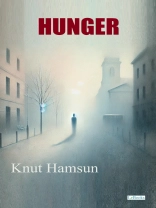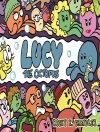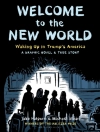Hungerby Knut Hamsun is a psychological exploration of desperation, human will, and existential struggle. Through the eyes of the unnamed protagonist, Hamsun paints a stark picture of poverty and isolation in a modernizing city. The protagonist's hunger is both literal and symbolic, representing not only his physical deprivation but also his yearning for meaning and artistic recognition. The novel delves into the complexities of mental instability as the narrator fluctuates between states of delusion, pride, and anguish, revealing the depths of human suffering and resilience.
Since its publication, Hunger has been hailed as a pioneering work in modernist literature. Its introspective narrative style and focus on the inner turmoil of the protagonist have influenced many later writers. The novel's existential themes resonate with readers, touching on the alienation and internal conflict faced by individuals in a rapidly changing society. Hamsun's depiction of the psychological effects of extreme hunger and poverty is both poignant and unsettling, offering a raw portrayal of human endurance in the face of societal neglect.
The relevance of Hunger persists due to its timeless exploration of human nature. By examining the intersections of pride, despair, and the quest for survival, the novel provides a profound commentary on the fragility of the human condition. Hamsun's work continues to inspire reflection on issues of poverty, mental health, and the search for purpose, making it a powerful contribution to world literature
Sobre o autor
Knut Hamsun was a Norwegian author and one of the most influential literary figures of the early 20th century. Hamsun's writing, which often explores themes of nature, isolation, and human psychology, earned him the Nobel Prize in Literature in 1920. His unique narrative style and deep exploration of the individual's inner world positioned him as a precursor to modernist literature, influencing a generation of writers including Ernest Hemingway and Franz Kafka.
Hamsun's breakthrough novel Hunger (1890) is widely considered one of the first works of psychological literature. The novel follows the experiences of an unnamed narrator, who, in a semi-autobiographical reflection of Hamsun's own struggles, battles with poverty and madness in an unnamed city. Hunger marked a departure from the dominant realist literature of the time, focusing instead on the fragmented inner thoughts and feelings of its protagonist.
Throughout his career, Hamsun continued to explore the complexities of the human psyche, often depicting characters who grapple with loneliness and alienation. In Mysteries (1892) and Pan (1894), Hamsun presents protagonists whose inner lives are at odds with the societal and natural world around them. His use of stream-of-consciousness and attention to minute emotional details paved the way for later modernist authors. His novel Growth of the Soil (1917), for which he won the Nobel Prize, is a more grounded work, celebrating the simplicity and hard work of rural life.
Knut Hamsun's work had a significant impact on 20th-century literature, particularly for his focus on the subconscious mind and inner turmoil of individuals. His influence is evident in the writings of authors like Hermann Hesse and Thomas Mann, as well as American novelists such as William Faulkner. His portrayal of isolated individuals and their relationship with nature has been particularly celebrated, making him a key figure in Nordic literature.












